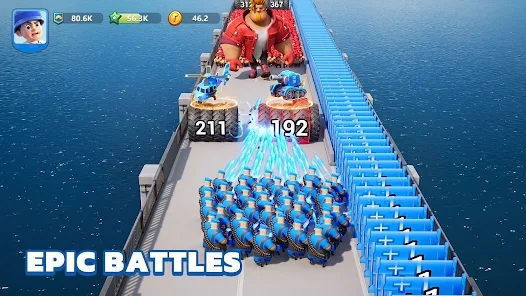Unlocking Endless Creativity: The Rise of Sandbox Games in Incremental Gameplay - Where Game Design is Evolving with Time
Innovation Through Game Mechanics - A Shift in Design Philosophy
Gaming’s no longer about sticking to the beaten path or simply completing missions with limited options. These past couple years have brought forward something entirely unexpected — combining sandbox games’ limitless creativity with incremental gameplay's slow-drip dopamine hits. Developers, both indie creators and AAA studios alike, are now mixing open-world sandbox design with repetitive progress loops, creating what might just be gaming's most addictive hybrid model so far.
You're probably wondering if that even works. Shouldn’t freeform creativity clash with methodically paced resource gathering? Turns out... not at all! Some players argue it actually feels like playing two distinct yet complementary games at once – a world where your imagination sets boundaries while patience rewards persistence.
Haven't fully wrapped your head around why this works yet? That’s completely fine — it takes time grasping this duality concept in game interaction dynamics. Let's start with how both mechanics evolved individually before they collided in modern titles.
What Defines a Modern Sandbox Game?
A traditional sandbox title gives players unrestricted freedom inside digital playgrounds designed by programmers who want their audience to create their own goals and playstyle rules as needed without imposed direction. Examples include classics like Grand Theft Auto series, which allows driving hijacking cars stealing weapons etc while other notable names are titles such Minecraft and Skyrim allowing exploration creation crafting building cities and exploring ancient lands freely .
| Past Era Sandboxing Examples | Present Trends in Design (Hybrid Integration) | |
|---|---|---|
| User Goals | Freely determined by player imagination | Rewards structured for progression, but paths vary greatly |
| Mechanics Style | Straightforward mission completion loops | Increased emphasis on resource harvesting / upgrades over long stretches |
The Appeal of Repetition – Why Players Return Daily to the Same UI Button Over & Again
Incremental games? Yeah you heard right—those oddly addictive clicker/tap-tap style mobile titles from the early 2010s haven’t disappeared either—they’ve grown into sophisticated empire-building simulations tied deeply with dopamine-driven mechanics where tiny daily improvements translate into exponential reward systems. You can think them as mental exercises that give small wins often encouraging players stick around through gradual power scaling.
When Worlds Collide — Merging Creativity and Incremental Growth Models
If I were to tell you that one genre offers artistic self-expression while another feeds psychological need of achieving consistency across days months… would you ever guess merging those creates some sort of hyper-focused user state in digital entertainment? Because apparently developers figured that out first—and it seems working wonders particularly in regions such Africa where mobile phones act as dominant device choice.
KEY INSIGHT:
Cross-cultural mobile adoption rates: Hybrid sandbox-incremental models thrive where smartphones dominate gameplay channels
Lower processing requirements=more accessibility than console-first games
- Different gameplay structures allow flexible sessions: Perfect for users jumping in between work hours / during short waits at bus stops etc)
This is exactly why titles blending sandbox exploration plus slow-gain strategy are making huge gains here across east African region.
Now take note: Clash Of Clans might sound dated but serves well in helping us grasp current trends due partly todownload clash of clans base searches remaining strong globally year after year—despite newer competition rising rapidly across Google Play Stores
To understand why let's quickly look under its gameplay skin.
- Civilizations develop slowly but reward long-term planning
- Battle prep requires multiple visits per session day after day
- Economy balancing mirrors real-world management strategies subtly introduced through simplified systems



